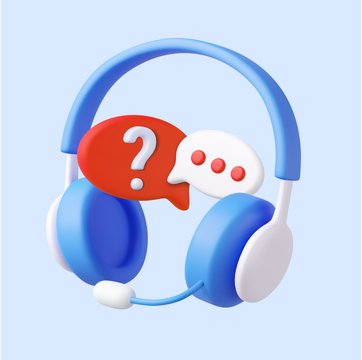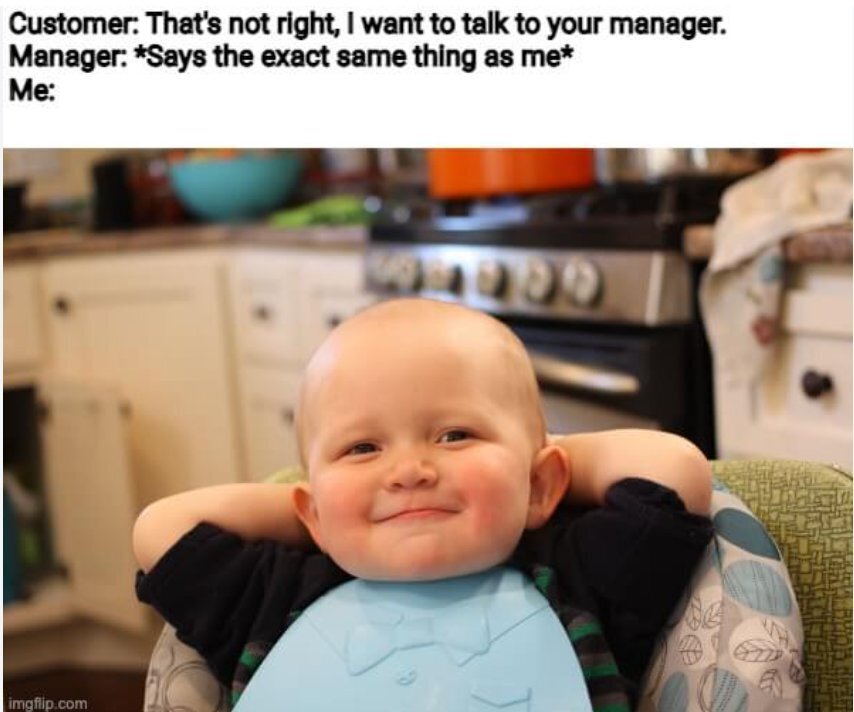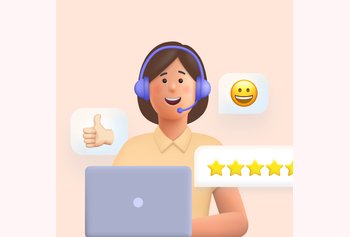9 most common customer service scenarios (and how to deal with them)

Table of contents
Hey there! If you’re reading this, chances are you’ve been on the front lines of customer service, or you’re about to be. And let’s be honest, difficult customers are not always a walk in the park. From the “Why is my bill so much?” to the classic “I can’t log in!” panic, customer service scenarios come in all shapes and sizes.
But here’s the good news: You’re not alone, and these customer experience scenarios are not as unpredictable as they seem.
In fact, most customer service interactions fall into a few common categories. That’s what we’re diving into today—those make-or-break customer service scenarios from different types of customers that you’ll likely encounter, whether you’re a seasoned pro or a newbie on the block.
Table of Contents
- 9 Most Frequently Occurring Customer Service Scenarios
- Turning Customer Service Scenarios into Success Stories
9 Most Frequently Occurring Customer Service Scenarios
Let’s get into the nitty-gritty of how to handle these situations and tricky customers like a champ. By the end of this article, you’ll be better equipped to turn even the trickiest customer service scenarios into opportunities for building stronger relationships.
The “Something’s Broken” ticket
The Customer Service Situation
The “Something’s Broken” ticket is a common but critical customer service scenario. It usually involves a user-facing issue, whether it’s a malfunctioning feature or a more serious system outage. These tickets are high-priority because they directly impact the user experience and can quickly escalate if not addressed promptly.
Why It’s Common
Let’s face it, no software is perfect. Bugs happen, glitches occur, and sometimes things just break. It’s the nature of the beast. But how you handle these situations can set you apart from the competition.
Steps to Resolve:
Acknowledge Quickly: The first rule of thumb is to acknowledge the issue ASAP. A simple “We’re on it!” can go a long way.
Gather Information: Ask for screenshots, error messages, or any other information to help diagnose the issue.
Keep Them in the Loop: Don’t go radio silent. Even if you don’t have a solution yet, a quick update can ease a lot of tension.
Fix and Confirm: Once the issue is resolved, make sure to confirm with the customer that everything’s working as it should be.
Follow-Up: A day or two later, check in to make sure everything is still okay. This shows you care beyond just closing a ticket.
Pro Tip
Turn this customer service scenario into an opportunity for boosting customer loyalty. After resolving the issue, consider sending a small token of apology, like a discount on their next bill or a free feature upgrade. It’s a small gesture that can make a big impact.
The “How Do I Use This Functionality?” Query
The Customer Service Situation
The “How Do I Use This Feature?” customer service scenario is a crucial moment in customer education and retention. It usually comes from users who are engaged enough to explore your software but need guidance to fully utilize its capabilities. These queries are opportunities to not only assist but also to deepen the customer’s understanding and appreciation of your product.
Why It’s Common
New features can be exciting but also a bit intimidating. Not everyone is tech-savvy, and even those who are might not have the time to explore every nook and cranny of your software.
Steps to Resolve
Acknowledge and Assure: Start by letting them know you’re here to help. A simple “No worries, I’m here to show you how.” can set a positive tone.
Simplify the Explanation: Break down the steps in a way that’s easy to understand. Avoid jargon. The customer wants step-by-step instructions in a simplified language.
Use Visual Aids: If possible, include screenshots, GIFs, or even a quick video tutorial. Visuals can make complex instructions easier to follow.
Confirm Understanding: After you’ve explained, ask if the customer has any more questions or if there’s anything they’d like you to clarify.
Follow-Up: A couple of days later, check in to see how they’re doing with the feature. It shows you care about their experience.
Pro Tip
Consider this an opportunity to improve your user documentation. If one customer is asking about a feature, there’s a good chance that others are probably wondering the same thing. Update FAQs or create a new how-to guide based on the query.
Empower your customers to self-serve
The “I Want a Refund” Conversation
The Customer Service Situation
The “I Want a Refund” customer support scenario is a high-stakes customer interaction that often signals dissatisfaction with your product or service. While it may seem like a loss, it’s actually a valuable opportunity to seek feedback and understand where you can improve. How you handle this can either sever the relationship or, surprisingly, strengthen it.

Why It’s Common
Refund requests can arise for a variety of reasons—unmet expectations, financial constraints, or even just a change of heart. It’s a natural part of doing business.
Steps to Resolve
Acknowledge and Ask for a reason: The first step is to acknowledge the request and empathize with their frustration. The next step is to ask for the reason behind it. You can’t address the issue if you don’t know what it is.
Review the Policy: Before proceeding, make sure you’re clear on your company’s refund policy. This will guide the conversation.
Offer Alternatives: If possible, offer solutions that might resolve their issue without resorting to a refund. This could be a free month of service or a feature upgrade.
Process or Escalate: If a refund is the only solution, process it promptly. If it’s a larger issue, it may need to be escalated.
Follow-Up: Regardless of the outcome, a follow-up is crucial. If they stay, ask for feedback on how to improve. If they go, thank them for their time and ask for parting feedback.
Pro Tip
Always document the reasons behind refund requests. This data is gold for your product development and customer service teams, helping them identify areas for improvement.
The “Can You Add This Feature?” Request
The Customer Service Situation
When a customer asks if you can add a particular feature, it’s more than just a question. It’s a signal that they’re invested in your product and see room for its evolution. This is a critical moment for customer relations and product development. It’s also a test of how well you, as a customer service representative, can manage expectations while gathering actionable insights for your roadmap. Active listening here has the potential to turn a new customer looking for features into a loyal one.
Why It’s Common
Customers are the people who use your product or service day in and day out, and they often see gaps or opportunities that you might not have considered. These feature requests are a form of direct feedback and can serve as a valuable resource for innovation.
Steps to Resolve
Acknowledge and Thank: First off, thank them for their suggestion. It shows you value customer input.
Evaluate the Request: Before making any promises, assess how the customer’s request aligns with your current product strategy and user needs.
Be Transparent: Honesty is key. If you can add the feature, give a rough timeline. If not, explain why it doesn’t fit into the current roadmap. Transparency goes a long way into building loyal customers.
Document and Prioritize: Log the feature request and discuss it in your next product meeting. If similar requests are coming in, it might be time to prioritize it.
Keep Them Updated: Let the customer know if you decide to implement the feature. If possible, involve them in beta testing.
Pro Tip
Consider creating a feature request board or a public roadmap where customers can upvote desired features. This not only keeps your user base engaged but also helps you prioritize based on actual demand.
The Angry Customers’ “You’re Not as Good as [Competitor]” Comments
The Customer Service Situation
When a customer tells you that you’re not as good as a competitor, it’s easy to take it personally. But don’t. This is actually one of the most direct forms of market research you can get. It clearly signals that the customer sees value in your offering but believes there’s room for improvement. This is your chance to turn a critique into an opportunity for becoming even better.
Why It’s Common
Customers often have experience with alternative solutions in the same industry or vertical. They’re making this comparison based on firsthand experience, and their insights can reveal gaps in your product or service that you might not be aware of.
Steps to Resolve
Keep Emotions in Check: It’s natural to feel defensive, but professionalism wins the day. Acknowledge their opinion respectfully.
Ask for Details: A generic complaint isn’t actionable. Ask for specifics about what they think the competitor does better.
Highlight Your Strengths: Without turning it into a sales pitch, gently remind them of your unique selling points. Maybe you offer better customer service, or perhaps your product has features that the competitor lacks.
Document and Analyze: Make a record of the feedback from the customer’s issue and share it with the relevant internal teams. This could be invaluable data for your next strategy meeting.
Follow-Up: Let them know if you make changes based on their feedback. It shows you listen and value their opinion.
Pro Tip
Compile this kind of feedback into a “Voice of the Customer” report. Regularly review it with your team to identify recurring themes or areas for improvement.
Recommended Read:
13 Email Response Templates to Handle Angry Customers
The “Can I Speak to Your Manager?” Situation
The Customer Service Situation
When a customer asks to speak to a manager, it’s often because they feel their concerns aren’t being adequately addressed. While this can feel like a failure on the frontline, it’s actually a critical juncture for quality control and service improvement. How you handle the customer’s problem can either escalate the issue or turn it into a learning and improvement opportunity for your entire support team.

Why It’s Common
Customers usually escalate to management when they’re either extremely dissatisfied or believe their issue is too complex for frontline staff to handle. It’s a common part of customer service that tests both your team’s skills and your company’s escalation protocols.
Steps to Resolve
Assess the Situation: Before hitting the panic button, evaluate whether the issue truly needs managerial intervention. Some customers ask for a manager when a little more explanation from you could resolve the issue.
Follow Escalation Protocol: If the situation warrants it, escalate according to your company’s guidelines. Make sure to brief the manager on all the details so they’re not walking in blind.
Document Thoroughly: Keep a detailed record of the interaction, including why the customer wanted to escalate and all interactions that have taken place so far.
Follow-Up: After the manager has spoken to the customer, follow up to ensure that the issue was resolved to the customer’s satisfaction. This also helps in closing the loop.
Internal Review: Use this as a case study for team training. What could have been done differently to avoid escalation? Are there gaps in training or resources?
Pro Tip
Regularly review your escalation protocols and train your team on them. Make sure they know when to handle things themselves and when to bring in higher-ups. Empower them to make these judgment calls.
Instantly access contextual history of customer conversations
The “Your Service Is Down” Alarm
The Customer Service Situation
When you get a “Your Service Is Down” alert, it’s not just a technical issue; it’s a trust issue. Your customers rely on your service for their own operations, and downtime can have a ripple effect on their business. This scenario is a critical test of your company’s responsiveness and communication skills, and it offers a chance to demonstrate reliability even in a crisis.
Why It’s Common
No service is up 100% of the time. Whether it’s server issues, software bugs, or third-party outages, downtime is an unfortunate reality for any tech product or service.
Steps to Resolve
Immediate Acknowledgment: The first step is to acknowledge the issue publicly and directly to affected customers. Time is of the essence.
Diagnose the Issue: Work closely with your technical team members to understand the root cause and estimated time for resolution.
Regular Updates: Keep customers informed through multiple channels—email, social media, or your website. Transparency is key.
Resolution and Debrief: Once the issue is resolved, inform your customers and offer a brief explanation of what went wrong and the steps taken to fix it.
Follow-Up: After the service is restored, a follow-up message thanking customers for their patience can go a long way in rebuilding trust.
Pro Tip
Consider creating a status page that customers can check for real-time updates on service issues. This can reduce the volume of support tickets and calls during an outage.
Recommended Read:
10 ITSM Email Templates: Mastering Scheduled Downtime Communication
The “When Will This Issue Be Fixed?” Impatience
The Customer Service Situation
When a customer calls and repeatedly asks, “When will this issue be fixed?”, it’s not just about the technical glitch; it’s about the erosion of patience and trust. This scenario is a litmus test for your customer service’s ability to manage expectations of your customer’s needs and communicate effectively. It’s also an opportunity to show that you’re committed to resolving issues in a timely manner, even when the clock is ticking loudly.
Why It’s Common
Customers are often juggling their own deadlines and responsibilities. When they encounter an issue with your service, it can disrupt their workflow, making time a critical factor.
Steps to Resolve
Acknowledge the Urgency: Let the customer know you understand the time-sensitive nature of the issue.
Provide a time frame: If possible, give an estimated time for resolution. If you can’t, explain why and assure them that it’s a priority.
Keep Them in the Loop: Regular updates can go a long way in easing impatience. Even if there’s no new development, a quick status update can be reassuring.
Explain the Process: Sometimes, knowing what’s being done to fix an issue can make the wait more bearable for the customer.
Follow-Up: Once the issue is resolved, reach out to confirm that everything is working as expected and thank them for their patience.
Pro Tip
Use a ticketing system that allows customers to track the status of their issues. This can give them a sense of control and reduce the frequency of “When will this be fixed?” queries.
Manage Customer Expectations with SLAs
The “I’m Leaving You for [Competitor]” Breakup
The Customer Service Situation
When a customer tells you they’re leaving for a competitor, it’s a clear indication that something didn’t go as planned in their customer journey. While it’s tempting to write this off as a loss, it’s actually a crucial opportunity for learning. This customer scenario is your last chance to either salvage the relationship or gather insights that can prevent similar churn in the future.
![The "I'm Leaving You for [Competitor]" Breakup Email](https://images.hiverhq.com/blog/wp-content/uploads/2024/05/Screenshot-2024-05-13-at-12.48.57%E2%80%AFPM-1-1024x534.png)
Why It’s Common
Churn is an inevitable part of business, especially in competitive markets. Customers leave for various reasons: better pricing, features, or customer service. Understanding why can help you refine your own offerings.
Steps to Resolve
Keep it Professional: Thank them for their business and time, regardless of their reason for leaving.
Inquire About the Why: Politely ask why they’re choosing to leave. Is it a feature, pricing, or something else?
Offer Alternatives: If it’s an issue you can resolve, consider offering an incentive to stay, like a discount or free upgrade, as per company policy. But don’t beg; it has to make business sense.
Process the Exit: If they’re determined to leave, make the process as smooth as possible. The goal is to part on good terms.
Post-Exit Follow-Up: Send a thank-you note and ask for any final feedback. This can be in the form of an exit survey or a personal email.
Pro Tip
Conduct exit interviews or send out exit surveys. The feedback you gather is invaluable for identifying the reasons behind customer churn and can inform your retention strategies moving forward.
Turning Customer Service Scenarios into Success Stories
So, we’ve unpacked some of the most common customer service scenarios you’re likely to encounter. But let’s not view these as mere obstacles. Each one is an opportunity to shine, to show your customers that you’re committed to making their experience as smooth as possible.
The next time you’re faced with a tricky ticket or a challenging request, remember: it’s your stage to excel. Whether it’s resolving a complex issue or guiding a customer through a new feature, these interactions are chances to build stronger customer relationships and enhance your brand’s reputation.

































